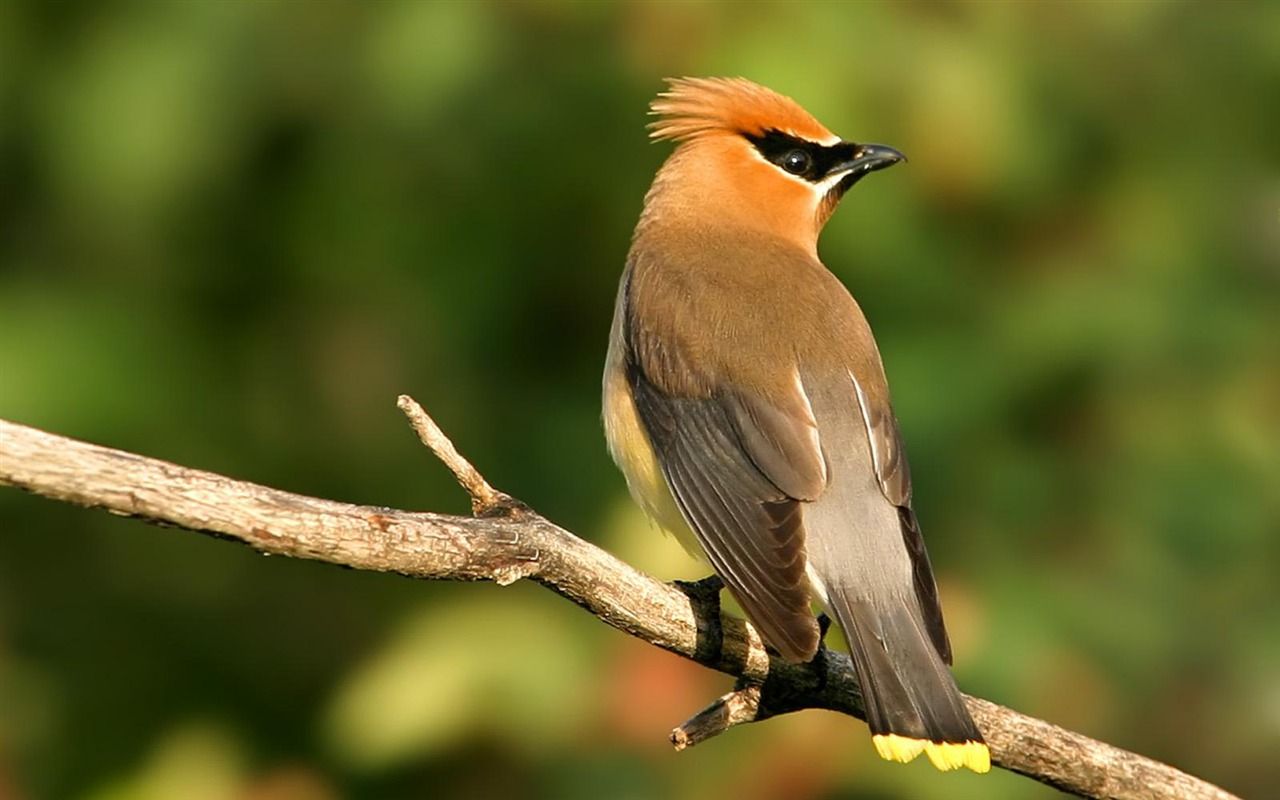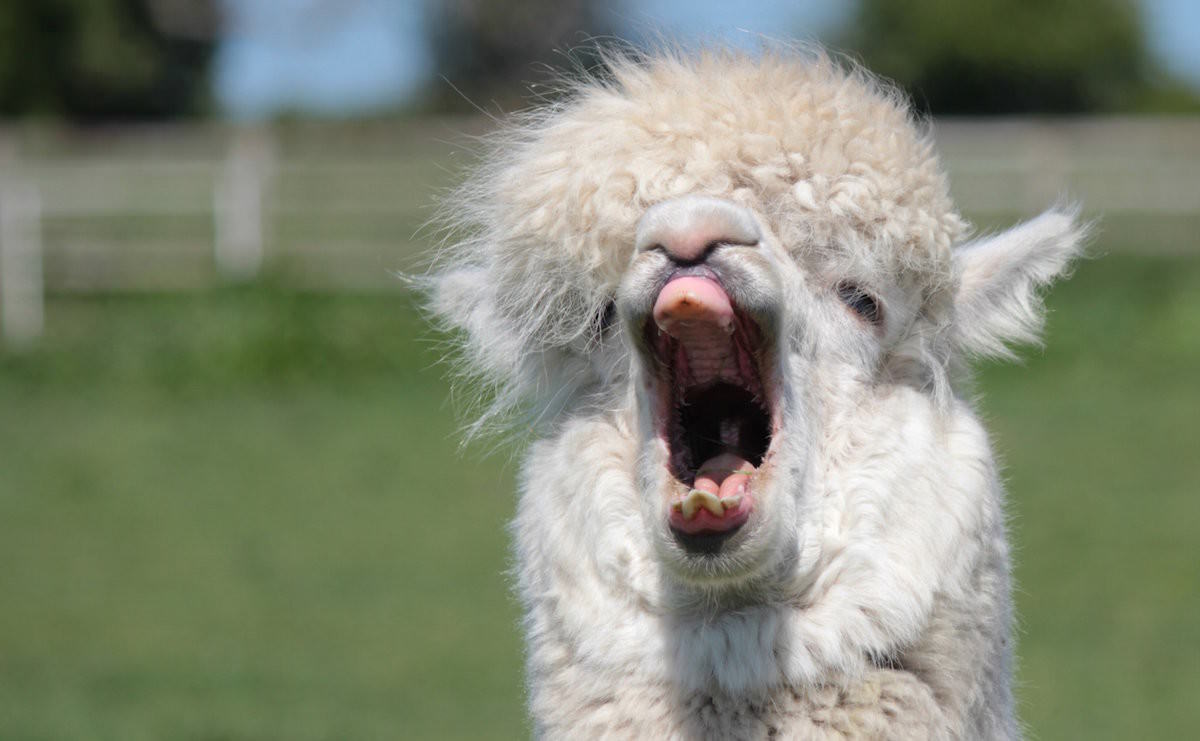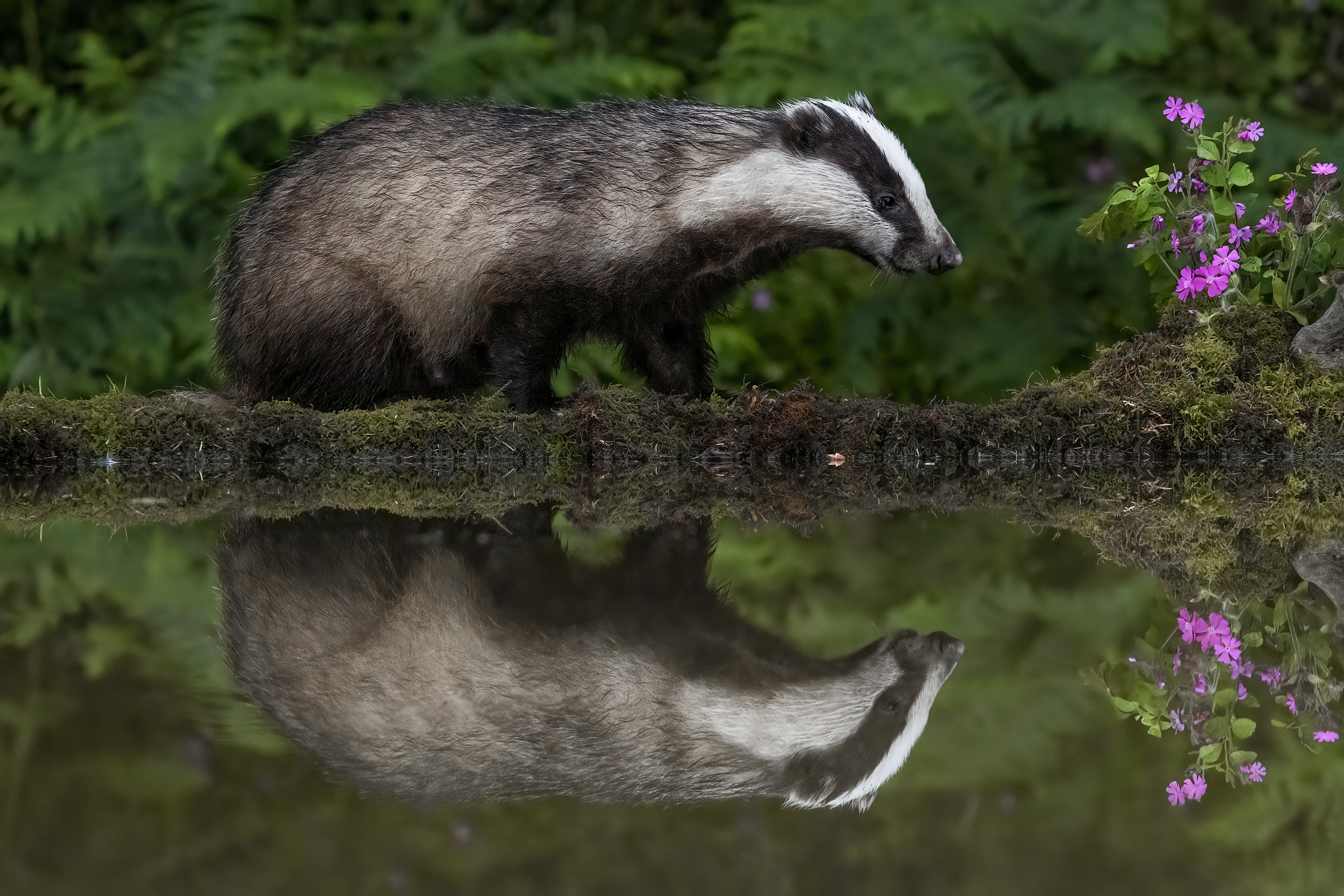Home>Production & Technology>Sound>What Animal Makes A Screeching Sound At Night


Sound
What Animal Makes A Screeching Sound At Night
Published: December 17, 2023
Discover which animal produces a loud screeching sound at night. Uncover the mysterious sound that echoes through the darkness.
(Many of the links in this article redirect to a specific reviewed product. Your purchase of these products through affiliate links helps to generate commission for AudioLover.com, at no extra cost. Learn more)
Table of Contents
Introduction
Have you ever found yourself lying awake at night, startled by a screeching sound coming from outside your window? If so, you’re not alone. Many creatures emerge after sunset, and some of them are known for their vocalizations that can be quite unsettling. In this article, we will explore the common and uncommon animals that make screeching sounds at night. Understanding these sounds can help alleviate any concerns and provide fascinating insight into the nocturnal world.
It is important to note that screeching sounds at night are not always a cause for alarm. In fact, they are often a part of natural animal behavior, such as hunting, mating calls, or establishing territory. By familiarizing ourselves with different animal sounds, we can better appreciate the diversity of wildlife that coexists with us.
Now, let’s dive into the world of screeching creatures and discover who might be responsible for those eerie sounds that keep us awake at night.
Common Animals That Make Screeching Sounds at Night
When it comes to identifying the source of screeching sounds at night, there are several animals that are commonly known for their vocalizations. Let’s take a closer look at them:
- Owls: Owls are notorious for their haunting hoots and screeches. These nocturnal birds use their vocalizations to communicate, mate, and establish territory. The Eastern Screech-Owl, in particular, emits a piercing screeching sound that can send chills down your spine.
- Foxes: Foxes are agile and vocal creatures known for their high-pitched screams and screeches. During the mating season, foxes often emit loud calls to attract mates and establish their presence in the area.
- Cats: Cats, especially feral or stray cats, are active hunters at night. When they spot prey or engage in territorial disputes, they may emit screeches or caterwauls that can be quite unsettling.
- Bats: While bats are generally associated with echolocation, some species, such as the Mexican free-tailed bat, produce screeching sounds as part of their communication and navigation. These high-pitched screeches are typically not audible to humans without specialized equipment.
- Raccoons: Raccoons are known for their mischievous behavior and vocalizations. When threatened or engaging in territorial disputes, raccoons may emit loud screeches and hisses to defend themselves.
- Possums: Possums, commonly found in urban and suburban areas, emit distinctive screeching sounds when they feel threatened or during mating season. These vocalizations can resemble a mix of hisses, screeches, and growls.
- Frogs: Various species of frogs are known to produce screeching sounds as part of their mating rituals. The calls of tree frogs, in particular, can be high-pitched and piercing, especially during the breeding season.
- Insects: While not technically animals, insects such as crickets and cicadas are often responsible for producing a continuous chorus of screeching sounds at night. These sounds serve as a means of communication and attracting mates.
These common animals play an essential role in the ecosystem, and their screeching sounds are a natural part of their behavior. While they may startle us at times, it’s important to appreciate the unique vocalizations of these creatures and the fascinating world they inhabit.
Owls
Owls are fascinating nocturnal creatures that are known for their distinctive screeching sounds. These birds of prey have evolved with specialized vocalizations that serve various purposes such as communication, mating calls, and territorial defense.
One common species, the Eastern Screech-Owl (Megascops asio), is particularly known for its piercing screech-like call. Their screech is often described as an eerie, high-pitched sound that can send chills down your spine on a dark night. Male Eastern Screech-Owls use this call to establish their presence and attract mates during the breeding season.
In addition to screeching, owls are also known for their hooting sounds. The familiar “hoot” associated with owls is typically produced by larger species such as the Great Horned Owl (Bubo virginianus) and the Barred Owl (Strix varia). These hoots are territorial calls made by males to mark their territory and attract females. The rhythmic pattern and tone of these hoots can vary between species, providing a unique auditory experience in the nocturnal world.
It’s important to note that not all owl species produce screeching or hooting sounds. Some owls, such as the Snowy Owl (Bubo scandiacus), have a relatively melodic call that resembles a soft, pleasant hoot. The vocalizations of owls are incredibly diverse, reflecting their adaptability to different habitats and prey preferences.
When you hear the screeching or hooting sounds of owls at night, it’s a reminder of their presence and their important role in controlling rodent populations and maintaining the balance of ecosystems. While their sounds may sound eerie or haunting to some, it’s a testament to their survival strategies and their ability to navigate the darkness.
So, the next time you hear a screech in the night, take a moment to appreciate the mysterious world of owls and the enchanting sounds they bring to the nocturnal symphony.
Foxes
When it comes to screeching sounds at night, foxes are often responsible for creating quite the auditory spectacle. These cunning creatures are known for their high-pitched screams and screeches that can be both haunting and captivating.
During the mating season, foxes engage in vocalizations to attract mates and establish territories. The males, in particular, emit loud, piercing calls that can be heard from a distance. These calls, often referred to as “vixen screams,” are used to signal their availability and prowess as potential mates.
The screeching sounds of foxes can also serve as a territorial display, warning other foxes and animals to stay away from their claimed area. These vocalizations can occur throughout the year as foxes defend their territory and guard their resources.
It’s important to note that the screeching sounds of foxes can be quite diverse, varying depending on the species and individual. For example, the Red Fox (Vulpes vulpes) is known for its distinctive, high-pitched scream that resembles a woman’s scream or a baby’s cry. This piercing sound is often mistaken for someone in distress or even a supernatural presence.
Though the screeches of foxes may startle or unsettle us, they are an integral part of their communication and behavior. These vocalizations are a testament to the adaptability and resourcefulness of foxes in their nocturnal existence.
So, the next time you hear a piercing screech in the darkness, take a moment to appreciate the remarkable vocal abilities of foxes and the captivating sounds they bring to the night.
Cats
While cats are often associated with their soothing purrs and gentle meows, there are times when their vocalizations take on a more screeching nature, especially during the nighttime hours.
Feral and stray cats, in particular, are known for their intense screeching sounds. These screeches can be loud, piercing, and sometimes unsettling. So, what causes these feline friends to emit such ear-piercing noises?
One reason cats may screech at night is during territorial disputes. When two cats come face to face, especially if they are unfamiliar with each other or seeking to establish dominance, they may engage in aggressive behavior accompanied by screeches. This is their way of asserting themselves and drawing a line in the sand.
Additionally, cats may screech when they are in heat. Female cats in estrus emit distressing sounds to attract male suitors. These intense wails and screeches are their way of signaling their reproductive availability to potential mates.
In some cases, cats may screech when they are in pain. If a cat is injured or experiencing a medical issue, they may vocalize in distress. It’s essential to pay attention to any changes in your cat’s vocalizations and behavior and seek veterinary care if necessary.
It’s important to note that not all cats screech at night. Indoor house cats, for example, may be more likely to produce softer meows and purrs, especially during nighttime interactions with their human companions. Screeching sounds are more commonly associated with outdoor and feral cats.
While the screeching sounds of cats may be unnerving, it’s their way of communicating and expressing their needs. Understanding the reasons behind these vocalizations can help foster a deeper connection and empathy towards our feline friends.
So, the next time you hear a cat’s screech in the stillness of the night, remember that it’s their way of asserting themselves, seeking a mate, or signaling distress. Take a moment to appreciate the complexity of their communication and the mysterious world of cats at night.
Bats
When it comes to animals that make screeching sounds at night, bats are often at the top of the list. These fascinating creatures, known for their ability to navigate in the darkness, use vocalizations as part of their communication and echolocation system.
Echolocation is a biological mechanism used by bats to navigate, find food, and avoid obstacles in their surroundings. Bats emit high-frequency sounds, which are then reflected off objects, allowing them to determine their location and the distance of objects around them.
While these high-pitched sounds are typically not audible to the human ear, they can sometimes be heard as a faint, rapid screeching noise. Bats produce these sounds by using special vocal cords and expelling air through their mouths or noses.
The specific screeching sounds emitted by bats vary depending on species, but they generally fall within the ultrasonic range, meaning they exceed the upper limit of human hearing. These screeches serve as a vital tool for bats to hunt insects, navigate in complete darkness, and communicate with other bats.
For example, the Mexican free-tailed bat (Tadarida brasiliensis) is known for its screeching calls that can be heard even from a considerable distance. These vocalizations serve as a social bonding mechanism, allowing bats to identify and communicate with each other in a dense colony.
It’s important to note that bats play a crucial role in maintaining ecological balance, as they consume large quantities of insects, including agricultural pests. While their screeching sounds may be unfamiliar and occasionally unnerving to us, it’s essential to appreciate the vital role they play in our ecosystem.
So, the next time you hear a faint screech in the night, it could very well be the enchanting vocalizations of bats as they navigate and communicate in their nocturnal domain. Take a moment to marvel at their remarkable echolocation abilities and their significant contribution to the natural world.
Raccoons
Raccoons, those mischievous bandits of the night, are known for their vibrant personalities and vocalizations that can include a range of sounds, including screeching.
When it comes to screeching, raccoons typically produce these vocalizations when they feel threatened or agitated. If a raccoon encounters another raccoon encroaching on its territory or comes face-to-face with a predator, it may emit a series of loud screeches and hisses as a warning sign.
Raccoons are highly adaptable creatures, able to thrive in urban as well as rural environments. As they navigate their surroundings at night, their screeches can reverberate through the quiet streets, causing alarm or curiosity among those who hear them.
It’s important to remember that raccoons are naturally wary of human presence but are generally not aggressive unless provoked. Their screeching is often a defensive response rather than an indication of aggression towards people. However, it’s always wise to maintain a safe distance and avoid interfering with raccoons in their natural habitats.
In addition to screeching, raccoons also produce a variety of other vocalizations. These can range from soft cooing sounds to chittering and growling noises when they are alarmed or frightened. These vocalizations serve as a means of communication within raccoon social groups and can indicate a range of emotions and intentions.
So, the next time you hear the piercing screech of a raccoon in the night, appreciate the complexity of their communication and the tenacity that allows them to thrive in a variety of environments. These vocalizations remind us of the vibrancy and diversity of wildlife that shares our world, even in the darkness of night.
Possums
Possums, also known as opossums, are nocturnal creatures that can be found in various regions around the world. These marsupials are known for their unique vocalizations, including screeching sounds, which they use for a variety of purposes.
When possums feel threatened or cornered, they may emit screeching sounds as a defensive mechanism. These loud, high-pitched screeches serve to intimidate potential predators and discourage them from approaching. The screeching can be accompanied by hissing or growling sounds, further emphasizing their desire to protect themselves.
Possums also produce screeching sounds during the mating season. Male possums may emit loud screeches or growls to establish dominance and attract females. These vocalizations serve as a means of communication and to assert their reproductive availability.
It’s important to note that the screeching sounds of possums can sometimes be mistaken for other animals, such as cats or even baby crying. This can create confusion or concern among those who hear these sounds for the first time. However, with familiarity, it becomes easier to identify the distinct screeching vocalizations of possums.
While screeching possums may startle or unsettle some people, it’s essential to remember that they are generally shy and non-aggressive creatures. They prefer to avoid confrontation whenever possible and rely on their vocalizations as a warning system before resorting to physical defense.
So, the next time you hear a piercing screech in the dark of night, remember that it could be the distinct vocalization of a possum trying to protect itself or communicate its presence. Take a moment to appreciate the resilience and adaptability of these fascinating nocturnal creatures.
Frogs
When it comes to creating a symphony of sounds at night, frogs are among the leading contributors. These amphibians are well-known for their vocalizations, which can range from gentle croaks to high-pitched screeches, especially during the breeding season.
Various species of frogs produce screeching sounds as part of their mating rituals. The calls of male frogs serve to attract females and establish territories. These vocalizations can be quite distinctive, with some species emitting screeching noises that resonate through the night.
Tree frogs, in particular, are notorious for their screeching calls. These high-pitched vocalizations serve as a means for male tree frogs to advertise their presence and attract potential mates. The sound of screeching tree frogs can be heard echoing through forests, wetlands, and backyard ponds.
Frog vocalizations may vary considerably between species, with some producing soft, melodic trills while others create loud, piercing screeches. These vocalizations often depend on the frog’s size, habitat, and specific mating behavior.
It’s worth noting that frogs are incredibly sensitive to their environment, and their vocalizations can be affected by factors such as temperature, humidity, and even light pollution. In some cases, changes in environmental conditions can impact the frequency and intensity of their calls.
While the screeching sounds of frogs may initially seem cacophonous to human ears, they are a testament to the thriving biodiversity found in wetlands and other freshwater habitats. These vocalizations play an essential role in the reproduction and survival of frog populations.
So, the next time you hear the high-pitched screech of a frog at night, take a moment to appreciate the remarkable adaptations and harmony of nature. The vocals of frogs serve as a reminder of the vital role they play in maintaining the delicate balance of ecosystems around the world.
Insects
When it comes to screeching sounds at night, we often associate them with insects. While not technically animals, insects play a significant role in creating a chorus of screeches that can fill the nighttime air.
One insect that is well-known for its screeching sound is the cricket. Male crickets produce a high-pitched chirping sound by rubbing their wings together. This chirping serves as a means of communication, primarily for attracting female crickets. The intensity, duration, and frequency of the chirping can vary across different species of crickets.
Cicadas are another group of insects known for their screeching sounds during the summer months. Male cicadas produce loud and distinctive clicks and buzzes to attract mates. These sounds can reach remarkable volumes, with some species generating sounds that can be heard from a distance of several hundred yards.
Other insects, such as grasshoppers and katydids, also contribute to the nighttime chorus of screeching sounds. Their calls are often rhythmic and repetitive, with each species having its unique pattern and tone.
While the screeching sounds of insects can be perceived as noise pollution, especially in urban areas, it’s essential to recognize their ecological significance. These vocalizations play a crucial role in insect communication, mating, and territoriality. They are an inherent part of the natural world, contributing to the diversity and vibrancy of ecosystems.
It’s worth noting that some insects, such as certain moth species, also produce ultrasonic sounds that are beyond the range of human hearing. These sounds serve as a way for insects to communicate and locate potential mates.
So, the next time you find yourself surrounded by the screeching sounds of insects at night, take a moment to appreciate the intricate web of life that exists in even the smallest of creatures. The nocturnal symphony of insect sounds serves as a fascinating reminder of the diverse and interconnected nature of our world.
Uncommon Animals That Make Screeching Sounds at Night
While certain animals like owls, foxes, cats, bats, raccoons, possums, frogs, and insects are commonly associated with screeching sounds at night, there are several other less common animals that can also produce intriguing and sometimes eerie vocalizations in the dark. Let’s explore some of these uncommon screeching animals:
- Bobcats: Bobcats, a species of wildcats native to North America, emit screeching or screaming sounds. These vocalizations, often compared to a woman’s scream, can be quite unsettling but are primarily used for communication during mating season and defending territory.
- Coyotes: Coyotes are known for their diverse vocal repertoire, which includes howls, yips, barks, and screeches. Their screeching sounds can range from high-pitched calls to more guttural and raspy vocalizations. Coyotes primarily use these sounds for communication and social bonding within their social groups.
- Fishers: Fishers, a type of carnivorous mammal native to North America, belong to the weasel family. They produce screeching or screaming sounds that can be mistaken for the sounds of a distressed human or a woman screaming. These vocalizations are typically associated with defense, aggression, and mating.
- Martens: Martens are small carnivorous mammals that emit sharp, high-pitched screeches, particularly during mating and territorial disputes. These vocalizations serve as a way for martens to communicate with each other and establish dominance within their social hierarchy.
- Porcupines: Porcupines are generally known for their quills and slow movements, but they can also produce screeching sounds when they feel threatened or scared. These vocalizations can be loud and sharp, serving as warning signals to potential predators.
While these animals may not be as commonly associated with screeching sounds at night, their vocalizations add to the diverse tapestry of wildlife sounds in various habitats. It’s important to understand and appreciate these unique acoustic contributions, as they play an essential role in the natural world.
The array of uncommon animals that screech at night reminds us of the intricate connections and adaptations found throughout the animal kingdom. So, the next time you encounter a peculiar screeching sound under the cover of darkness, take a moment to appreciate the fascinating creatures that share our world and the remarkable ways they communicate.
Bobcats
Bobcats, elusive and solitary creatures native to North America, are known for their majestic presence and unique vocalizations. While bobcats are generally quiet animals, they can produce screeching or screaming sounds that can be quite unsettling to hear, resembling the sounds of a woman’s scream or a crying baby.
Bobcats use these screeching vocalizations primarily for communication during the mating season and territorial disputes. Male bobcats emit these eerie calls to attract females and assert their dominance in the area. The loud and piercing screeches serve as a means of advertising their presence and capabilities to claim mates.
When it comes to territorial disputes, the screeching sounds of bobcats can serve as a warning to adversaries. These vocalizations indicate that a bobcat is defending its territory and may escalate into aggressive encounters if the intruder does not back off.
It is important to note that while bobcat screeches can be intimidating, they are a natural part of the species’ behavior and are typically not directed towards humans. Bobcats generally prefer to avoid human contact and are non-confrontational unless threatened or cornered.
Encountering the screeching sounds of a bobcat can be a rare and exhilarating experience. Their calls echo through the night, reminding us of the wild and untamed nature that still exists in certain regions.
It’s worth noting that both male and female bobcats can produce screeching sounds, but the vocalizations of males tend to be louder and more prominent during the breeding season.
So, if you ever find yourself in a wilderness area or near bobcat habitats, listen closely for the haunting screeches that may pierce the silence of the night. The screeching sounds of bobcats serve as a unique and awe-inspiring reminder of the diversity and beauty that exists in the animal kingdom.
Coyotes
When it comes to the screeching sounds of the nighttime wilderness, one cannot overlook the remarkable vocalizations of coyotes. These cunning and adaptable canines are known for their versatile and haunting calls, which include howls, yips, barks, and yes, screeches.
Coyotes have a diverse vocal repertoire, and their screeching sounds can range from high-pitched calls to more guttural and raspy vocalizations. These haunting screeches, often described as a mix of screams and wails, can echo through the night, creating an eerie and captivating atmosphere.
One of the primary reasons coyotes screech is for communication. These vocalizations serve as a means of social bonding within their packs, conveying information about their location, status, and intentions. The screeching sounds of coyotes can also serve as group coordination during hunting or as a rallying call when they want to reunite after dispersing.
During the breeding season, coyotes may emit passionate and high-pitched screeches as part of their courtship rituals. These vocalizations allow potential mates to locate each other and indicate reproductive availability.
It’s important to recognize that the screeching sounds of coyotes can vary depending on the region and individual. Different populations of coyotes may have distinct vocalizations, adding to the complexity and diversity of their communication strategies.
While the screeching sounds of coyotes can evoke a sense of unease or thrill, it’s crucial to remember that they are usually not a threat to humans. Coyotes are typically shy and wary of human presence. However, it’s essential to respect their wild nature and maintain safe distances when encountering them in their habitats.
So, the next time you hear the haunting screeches of coyotes in the darkness, take a moment to appreciate the beauty of their communication and the wild allure they bring to the night. Their vocalizations remind us of the untamed spirit of nature and the captivating mysteries that lie within.
Fishers
When it comes to screeching sounds at night, one unexpected source is the fisher, a carnivorous mammal native to North America. Despite its name, fishers are not primarily known for their fishing skills but rather for their piercing and distinctive vocalizations.
Fishers have a range of vocalizations, including screeching or screaming sounds that can be quite unsettling to hear. These calls are often compared to the screams of a distressed human or a woman screaming, leading to their colloquial nickname as “fisher cats”.
While the exact reasons behind their screeching vocalizations are still being studied, it is believed that fishers produce these sounds as a means of communication. They may emit screeches when they feel threatened, agitated, or during aggressive encounters with other fishers.
The screeching sounds of fishers are particularly prominent during the breeding season. Males use these vocalizations as a way to attract females and establish dominance. Male fishers engage in intense screeching battles to vie for the attention of potential mates, creating a cacophony of chilling calls in the night.
It’s important to note that while the screeching sounds of fishers may be unnerving, these animals are generally elusive and tend to avoid human contact. Fishers are skilled climbers and are more active at night, navigating the forests with stealth and agility.
Encountering the screeching sounds of fishers can be a rare and unique experience. Their calls add to the enigmatic and mysterious nature of the nocturnal wilderness that they inhabit.
So, the next time you find yourself near wooded areas or forests rich with diverse wildlife, listen closely for the eerie screeching vocalizations of the fishers. Their haunting calls are a reminder of the untamed beauty and the surprises that await in the depths of nature.
Martens
Martens, small carnivorous mammals that belong to the weasel family, are known for their agile nature and adaptability. These elusive creatures also produce screeching sounds, contributing to the symphony of nighttime vocalizations in the wild.
Martens emit sharp, high-pitched screeches, particularly during the breeding season and when defending their territories. These vocalizations serve as a means of communication to other martens, conveying information about their presence, intentions, and reproductive availability.
The screeching sounds of martens can vary in intensity and duration, depending on the specific situation. Male martens may use screeching vocalizations to assert their dominance during encounters with rivals, while females may produce similar sounds to attract mates.
Similar to other members of the weasel family, martens are skilled climbers and agile hunters. Their screeching vocalizations are a reflection of their adaptability and the need to communicate effectively in their woodland habitats.
It’s worth noting that while the screeching sounds of martens can be unsettling, encounters with these creatures are relatively rare due to their elusive nature and preference for remote areas.
Whether in dense forests or remote mountain regions, the screeching sounds of martens add an air of mystery and excitement to the nighttime wilderness. Their vocalizations provide a glimpse into the secretive lives of these fascinating creatures.
So, the next time you venture into martens’ habitats or discover yourself immersed in the natural beauty of the wild, listen closely for the intriguing screeching calls of these agile mammals. Their vocalizations remind us of the versatility and resilience of wildlife in diverse ecosystems.
Porcupines
When it comes to unexpected screeching sounds in the night, porcupines may not be the first animal that comes to mind. However, these solitary and spiky creatures are known to produce surprising vocalizations that can sometimes resemble loud screeches.
Porcupines are generally peaceful animals who prefer to avoid confrontation. When they feel threatened, porcupines can emit high-pitched screeching sounds as a warning signal. These vocalizations serve as a way to deter potential predators and communicate their readiness to defend themselves.
The screeching sounds of porcupines can be quite loud and sharp, often surprising those who are not familiar with these quirky animals. They are meant to startle and deter, serving as a defensive mechanism against would-be attackers.
Porcupines also emit vocalizations during the breeding season when males compete for the attention of females. These vocal displays may include a range of sounds, including screeching calls, to establish dominance and attract mates.
It’s important to remember that porcupines are generally non-aggressive and prefer to retreat rather than engage in confrontations. They rely on their quills and screeching vocalizations as their defense mechanisms, avoiding physical conflict whenever possible.
Encountering the screeching sounds of porcupines can be a rare and interesting experience. Their vocalizations remind us of the vast array of communication strategies that different animal species have evolved.
So, the next time you hear the unexpected screech of a porcupine in the night, take a moment to appreciate these unique creatures and their resourcefulness in using vocalizations as a means of defense. Their screeching sounds add a touch of curiosity and intrigue to the nocturnal symphony of the wild.
Conclusion
The screeching sounds that fill the night can be both eerie and fascinating. From the well-known creatures like owls and cats to the less common animals like fishers and martens, the nocturnal world is alive with a symphony of vocalizations that captivate our attention.
Through our exploration of the common and uncommon animals that make screeching sounds at night, we have gained a deeper appreciation for the diverse ways in which these creatures communicate and interact with their surroundings.
Whether it’s the piercing screech of an owl, the haunting cries of a coyote, or the unexpected screeches of porcupines, each animal’s vocalizations serve a purpose in their lives. These sounds convey mating calls, territorial warnings, defense mechanisms, and social bonding cues.
While these screeching sounds may occasionally startle us or provoke a sense of unease, it’s crucial to remember that they are a natural part of the animal kingdom. Each creature has its unique way of vocalizing, using sound to navigate their environment, establish relationships, and ensure their survival.
Understanding and appreciating these screeching sounds can deepen our connection to the world of wildlife that exists beyond our human-centric perspectives. It reminds us of the rich diversity of species that share our planet and the importance of their roles in maintaining the delicate balance of ecosystems.
So, the next time you find yourself caught in the chorus of screeching sounds at night, take a moment to pause, listen, and reflect on the intricate tapestry of life unfolding around you. Embrace the enchanting melodies and eerie calls as a reminder of the wonders that exist in the darkness, and the extraordinary adaptations of animals that inhabit the night.











